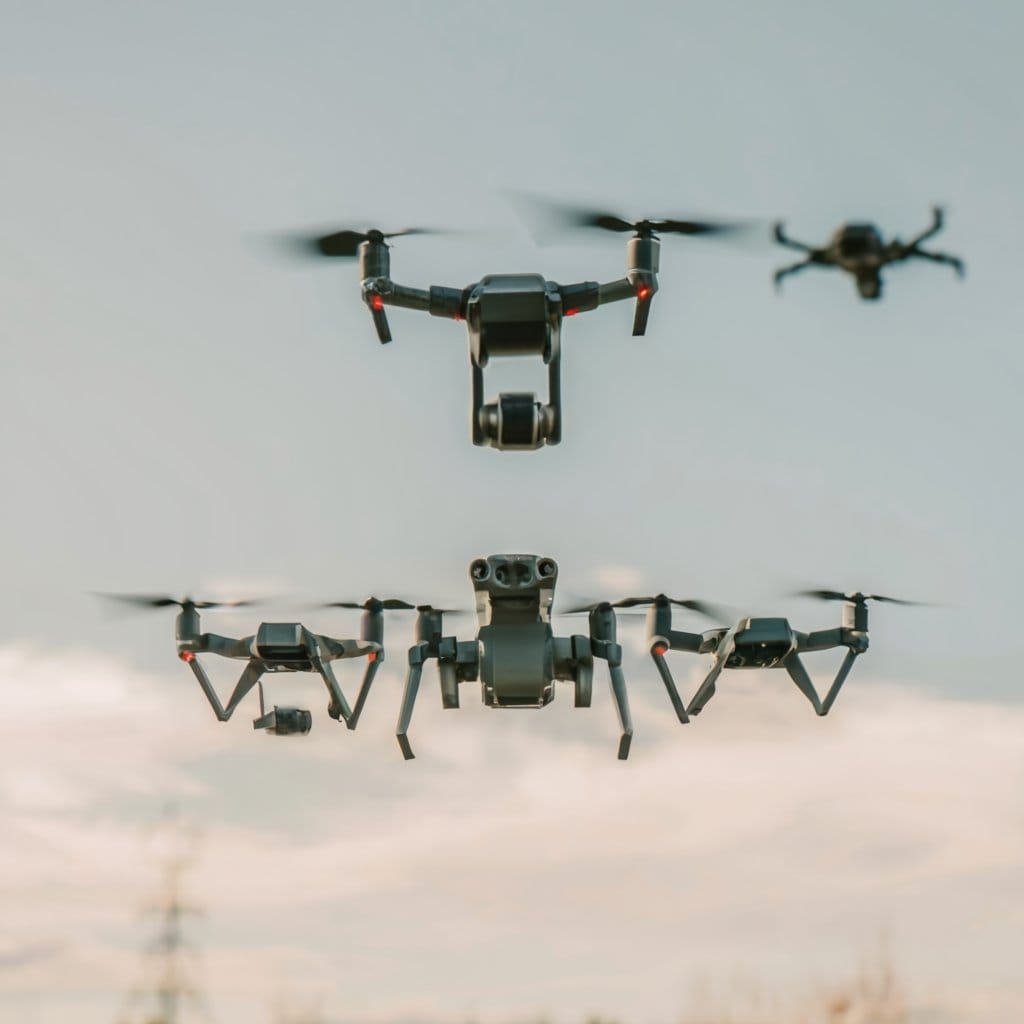The world of drones is rapidly evolving, and at the forefront of this evolution is the integration of artificial intelligence (AI), particularly in mini drones. This powerful combination is not just a futuristic concept; it’s a present-day reality that’s transforming industries and opening up unprecedented possibilities. This article delves into the exciting realm of AI in mini drones, exploring the key advancements, applications, and the future trajectory of this cutting-edge technology.

The Rise of Autonomous Flight
The future of drones is undeniably autonomous. Gone are the days of solely relying on manual control. AI empowers drones to navigate and make decisions independently, freeing them from the limitations of human intervention. This enhanced autonomy is achieved through a confluence of technologies, including:
- AI-Powered Navigation and Obstacle Avoidance: Mini drones are now equipped with sophisticated AI algorithms that enable them to perceive their surroundings, identify obstacles, and navigate complex environments with remarkable precision. This includes real-time obstacle avoidance, allowing them to adjust their flight paths to avoid collisions dynamically.
- Enhanced Autonomy and Navigation: AI is the driving force behind enhanced autonomy in drones. AI algorithms enable drones to understand their location, plan optimal routes, and execute complex maneuvers by processing data from various sensors, including cameras, lidar, and radar.
- Autonomous Navigation in Complex Environments: From dense urban landscapes to intricate indoor spaces, AI in mini drones enables them to navigate challenging environments that were previously inaccessible. This capability is crucial for a wide range of applications, including search and rescue, inspection, and delivery.
- The Power of Perception: Vision-based drones are a cutting-edge technology that enables drones to operate independently using only onboard cameras, without the need for GPS. This advancement emphasizes the critical role of perception in achieving full autonomy and unlocking new capabilities for these flying robots.
Capabilities of AI in Mini Drones
AI is not just about navigation; it’s also about enabling drones to perform intelligent tasks and extract valuable insights. Key capabilities include:
- AI-Driven Data Analysis and Decision-Making: Mini drones can now collect vast amounts of data, from high-resolution images and videos to thermal and multispectral information. AI algorithms analyze this data to identify patterns, extract relevant information, and make informed decisions.
- AI-Powered Flight Planning and Optimization: The algorithms of AI in mini drones optimize flight paths, taking into account factors such as weather conditions, airspace regulations, and energy consumption. This ensures efficient and safe operation, maximizing the drone’s capabilities.
- Real-Time Data Processing and Decision-Making: AI enables drones to process information in real-time, allowing them to react dynamically to changing circumstances. This is crucial for applications that require immediate responses, such as emergency response and surveillance.
- AI and Machine Learning Integration: The integration of AI and machine learning is pivotal in making drones smarter. Machine learning algorithms enable drones to learn from experience, improve their performance over time, and adapt to new situations.
Applications Across Industries
The applications of AI-powered mini drones are vast and continue to expand. Here are some key examples:
- Delivery and Transportation: AI is transforming delivery and transportation by enabling drones to deliver packages, medical supplies, and other goods with increased speed and efficiency.
- Precision Agriculture: Drones equipped with AI are used to monitor crop health, optimize irrigation, and detect pests and diseases, leading to increased yields and reduced resource consumption.
- Infrastructure Inspection: Mini drones can inspect bridges, power lines, and other critical infrastructure, identifying potential problems and reducing the need for costly and dangerous manual inspections.
- Emergency Response: In disaster situations, AI-powered drones can be deployed to search for survivors, assess damage, and deliver essential supplies.
- Environmental Monitoring: Drones can monitor deforestation, track wildlife, and measure air and water quality, providing valuable data for conservation efforts.
- Advanced Sensor Technology: Modern AI-powered drones are equipped with cutting-edge imaging and sensor systems, such as high-resolution cameras, thermal imaging, and multispectral sensors, pushing the boundaries of data capture and analysis.
The Road Ahead
The future of AI in mini drones is bright, with ongoing advancements promising even greater capabilities. Some key trends to watch include:
- The Future of Autonomous Flight: Continued research and development in autonomous systems will lead to even more sophisticated and capable drones.
- The Role of Simulation and AI: Simulation is used to generate large datasets quickly and safely, which is crucial for training perception and control algorithms for autonomous drones.
- The Road Ahead for Autonomous Drone Technology: There is a clear need for further exploration and collaboration in the field of autonomous drones, particularly to enhance robustness and versatility.
As AI continues to evolve, mini drones will become even more intelligent, versatile, and indispensable tools, transforming industries and shaping the future of how we interact with the world around us.



